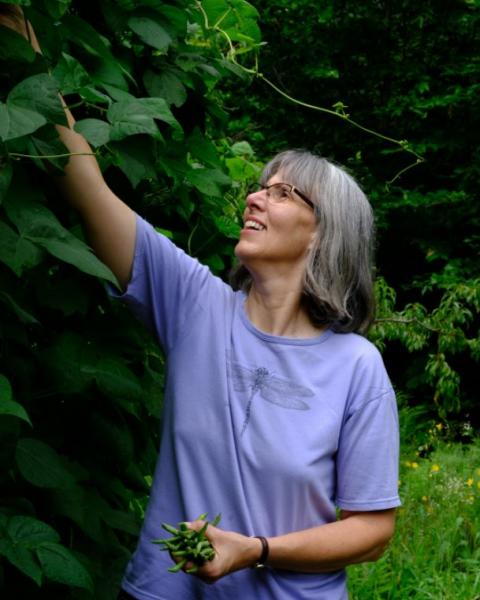Germination
7-14 days depending on soil and weather conditions
Planting
Sow in early spring for the first crop, and again in late summer for a fall crop. Grows best in average, well-drained soil, in full sun. Plant seeds evenly in rows that are 1-2’ apart. Cover seeds with ½” inch of fine soil and firm lightly. Thin seedlings to 6” apart when they are 1-2” tall. Keep plants well-watered during hot, dry weather, to promote fast growth. Plants should receive at least one inch of water a week. Bloomsdale Long Standing Spinach holds up better than other varieties of spinach in warm weather and is slower to bolt.
Harvesting
Harvest spinach before it flowers, cutting just above the root attachment. For a continuous supply of spinach, sow every 7 days. Spinach has the best flavor if harvested when young. Bloomsdale Long Standing Spinach matures in 40-48 days.
Description
Crinkled, thick, dark-green leaves on strong, upright plants.
Profile
Planting Depth: ½ inch
Soil Temperature: 50 degrees
Germination: 7-14 days
Plant Spacing: 6 inches
Row Spacing: 1-2 feet
Maturity: 40-48 days
Soil: Average, well-drained
Growing Habit: Upright annual
Sun: Full sun
Fruit Size: 10-12 inches
History
The word ‘spinach’ is derived from the Persian word for ‘green hand’, as the plant was cultivated in Iran more than 2,000 years ago. Spinach has been grown in Europe since the 1400s, and came with the first settlers to America. By 1806, spinach was listed in American seed catalogues. Bloomsdale Spinach was developed in 1874, by D. Landreth & Sons Seed Company of Philadelphia. Although spinach is considered to be dioecious, which means that male and female flowers appear on separate, unisexual plants, the heirloom variety ‘Bloomsdale Long Standing’ was bred from a single monoecious plant.
Connection to Extension
Bloomsdale long standing spinach is one of the heirloom seeds offered by Strawbery Banke Museum through our free seed for education program.
This planting guide was created through partnership among Strawbery Banke Museum, New Hampshire School & Youth Garden Network, New Hampshire Master Gardener Alumni Association and UNH Extension Master Gardeners.
